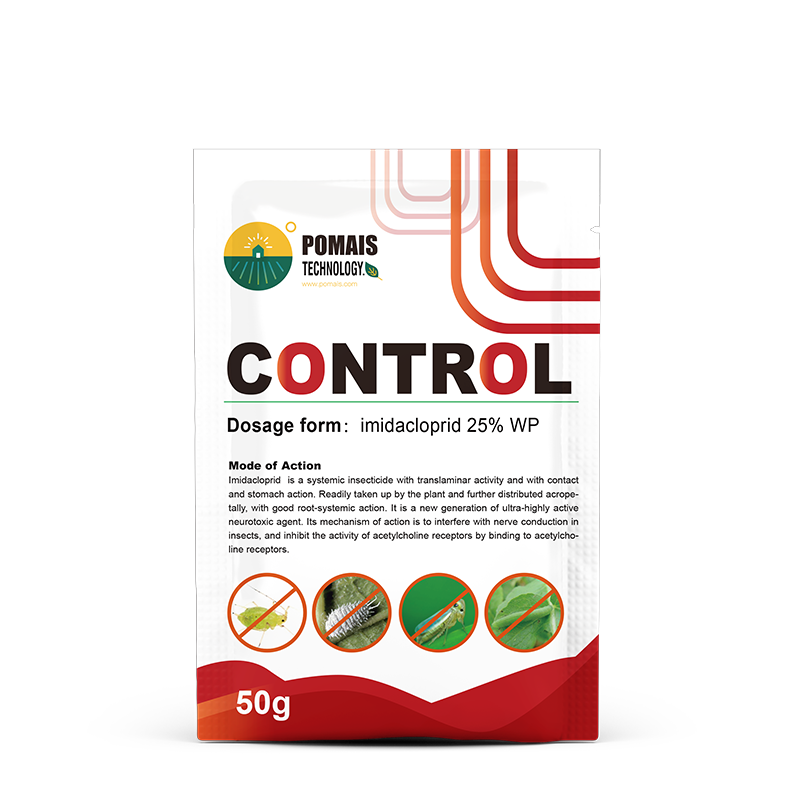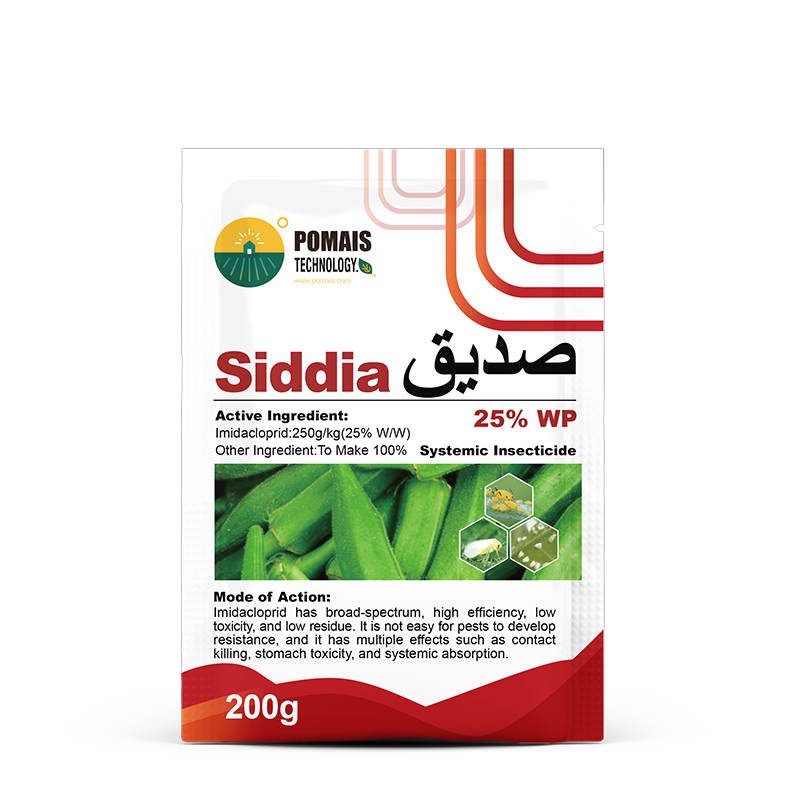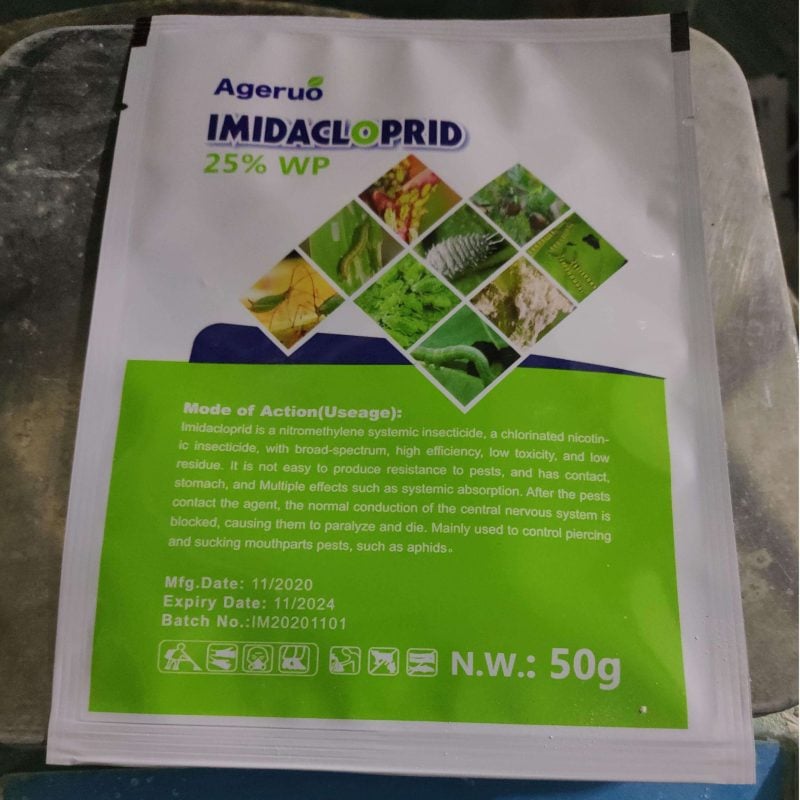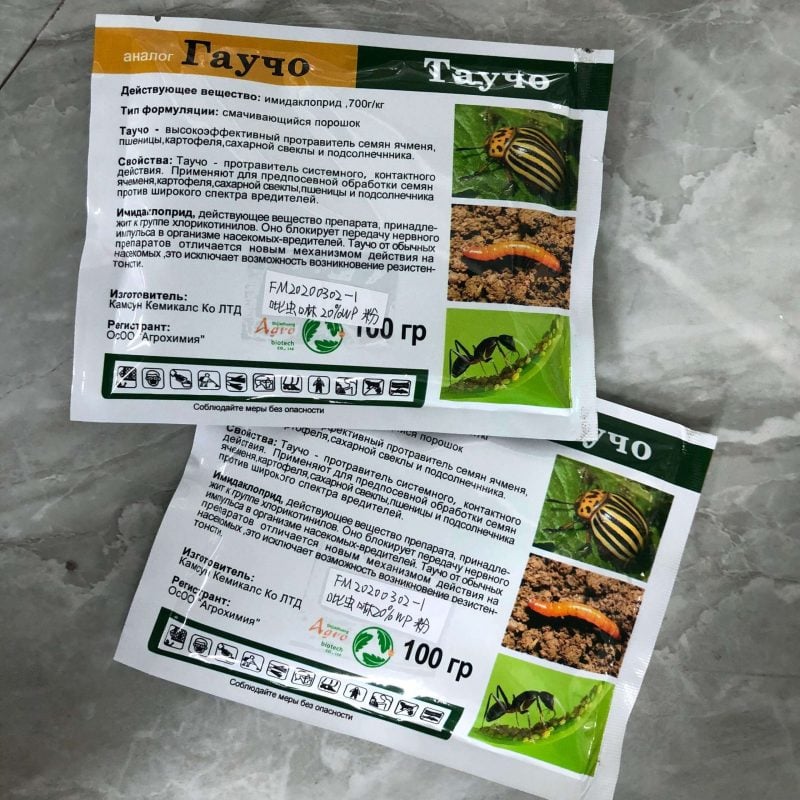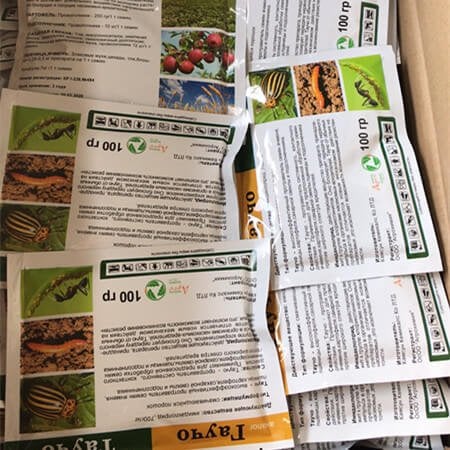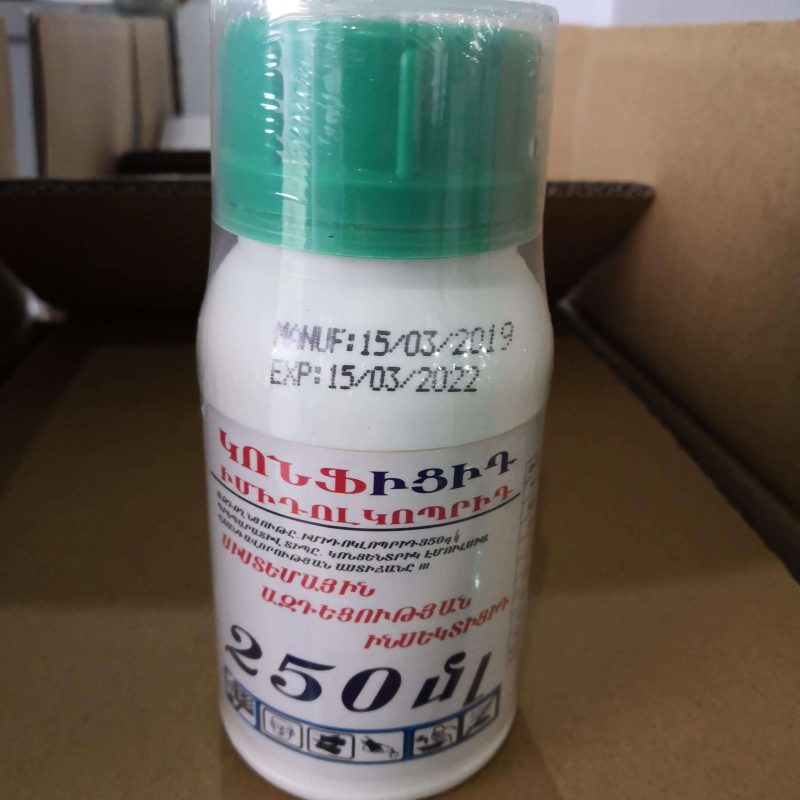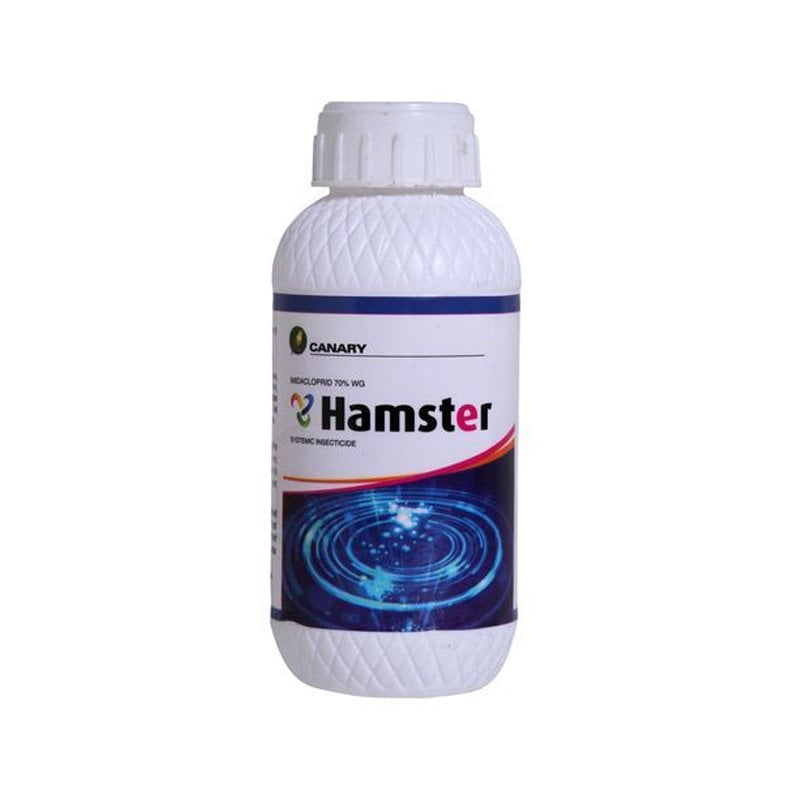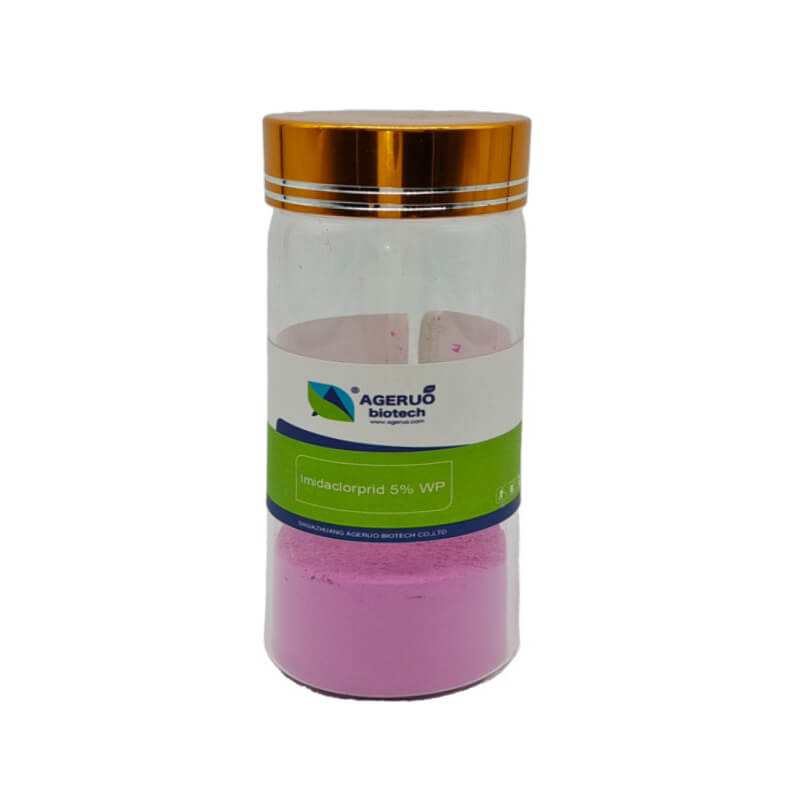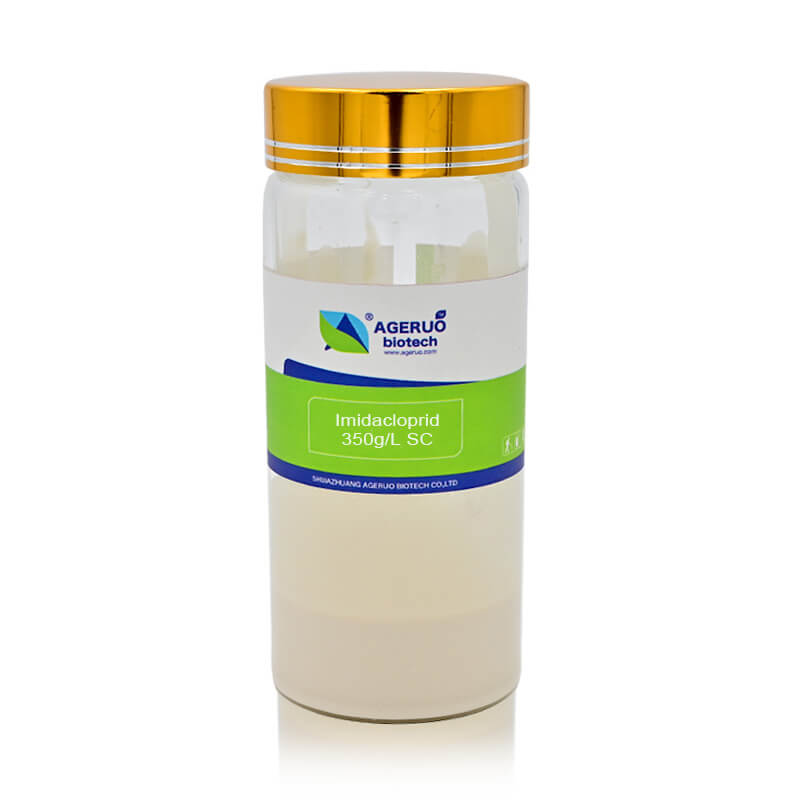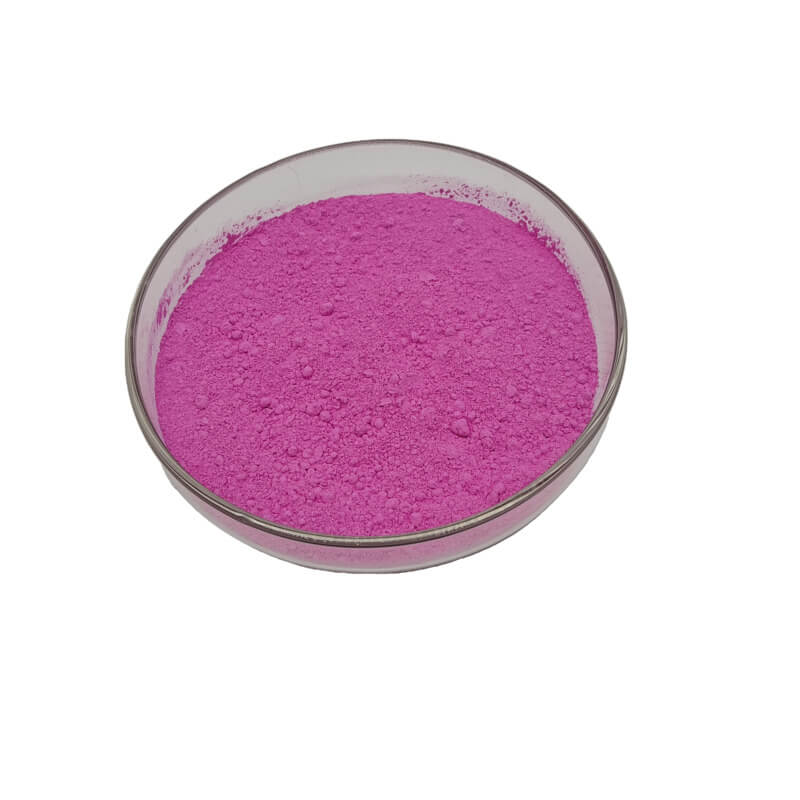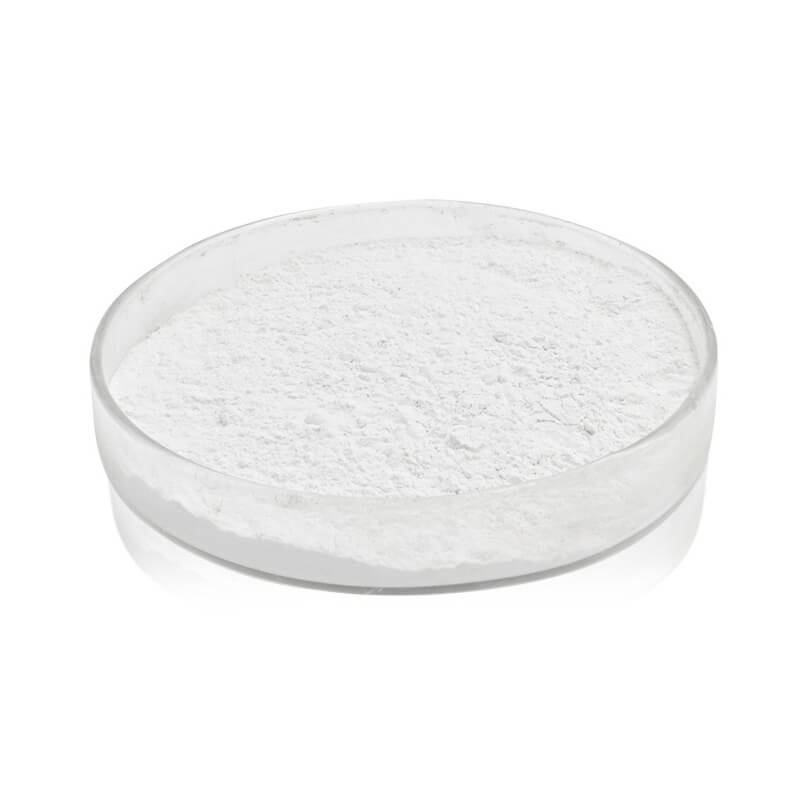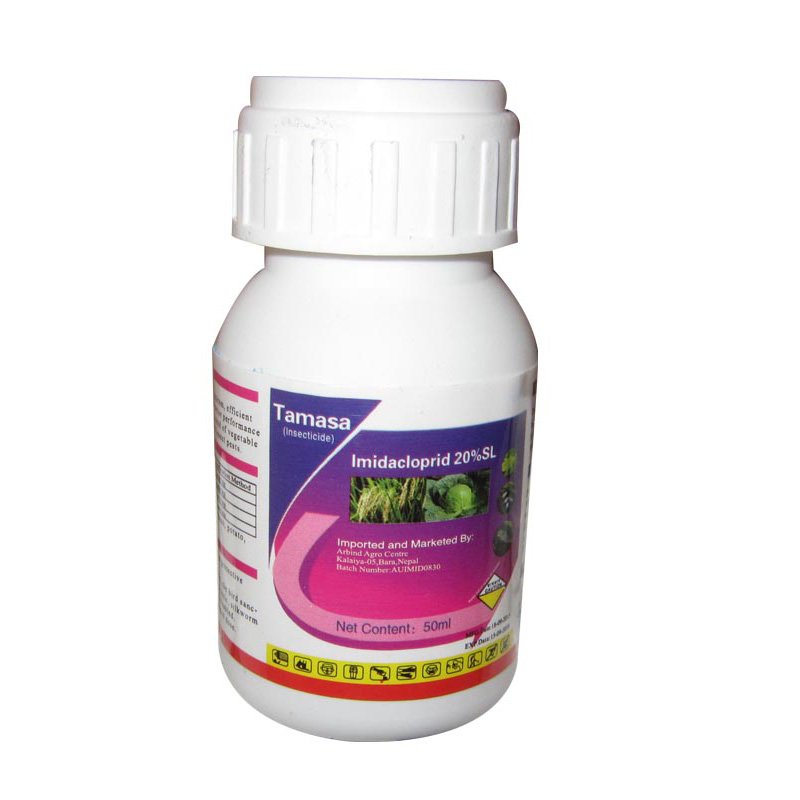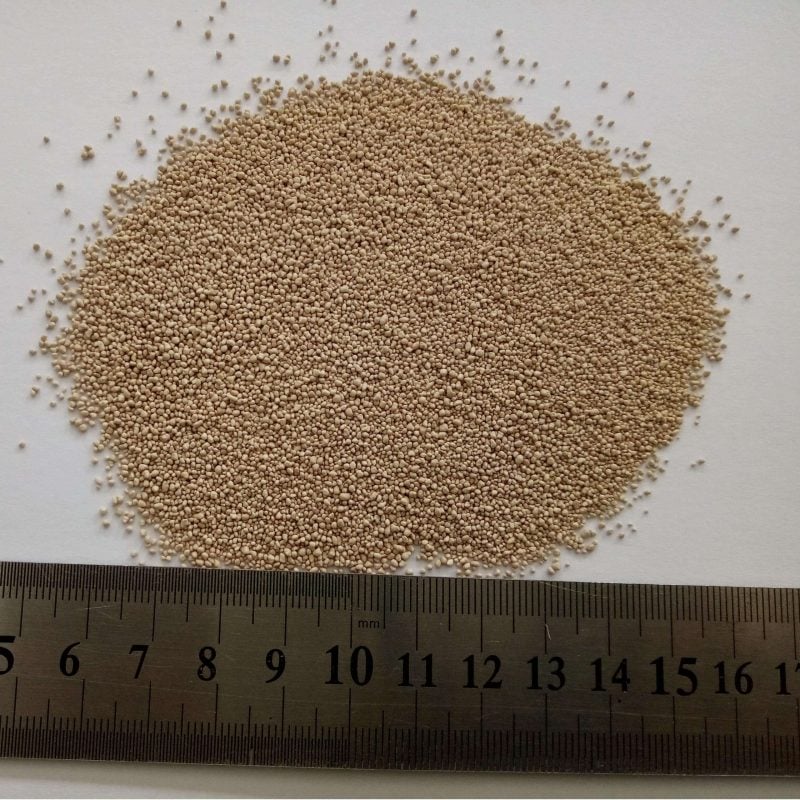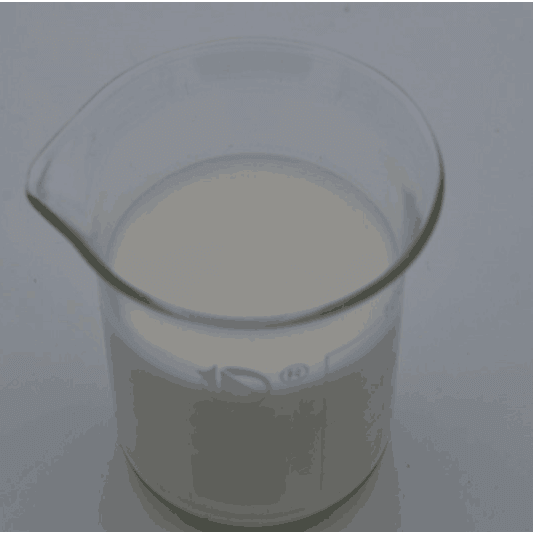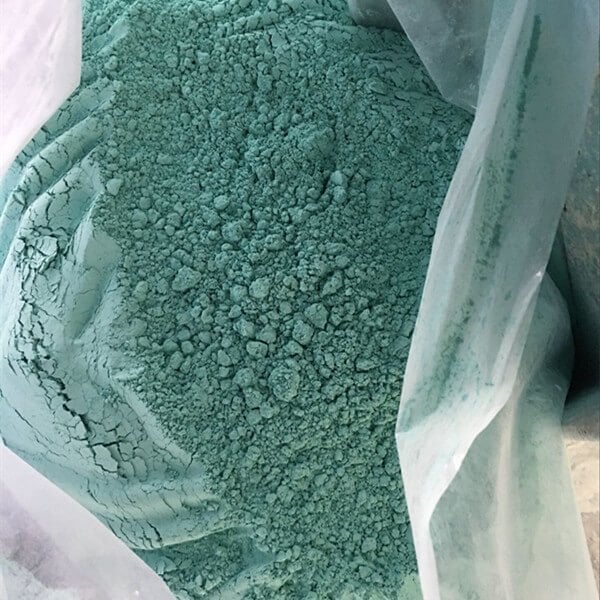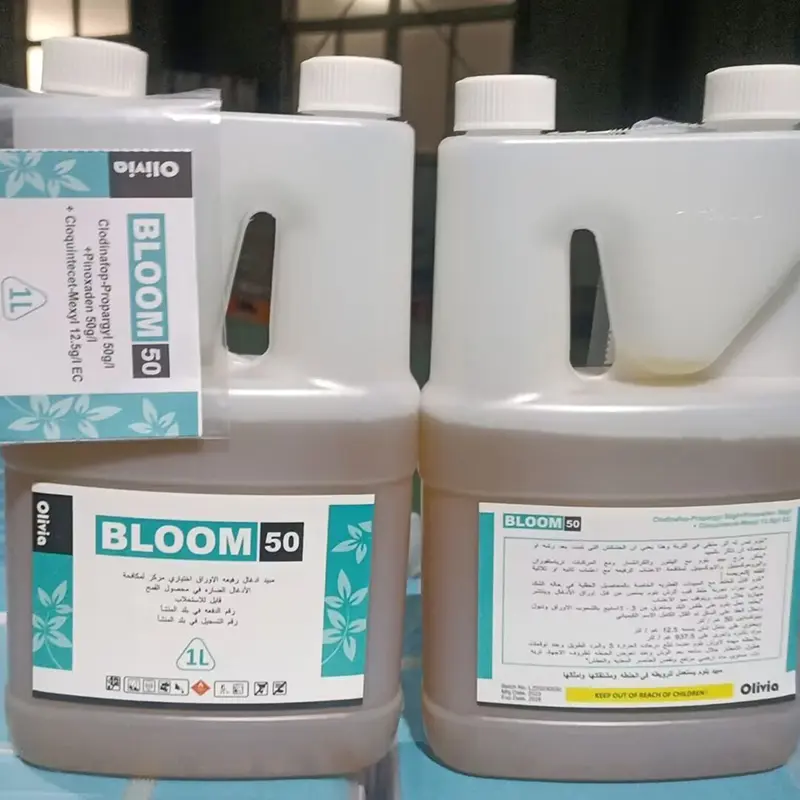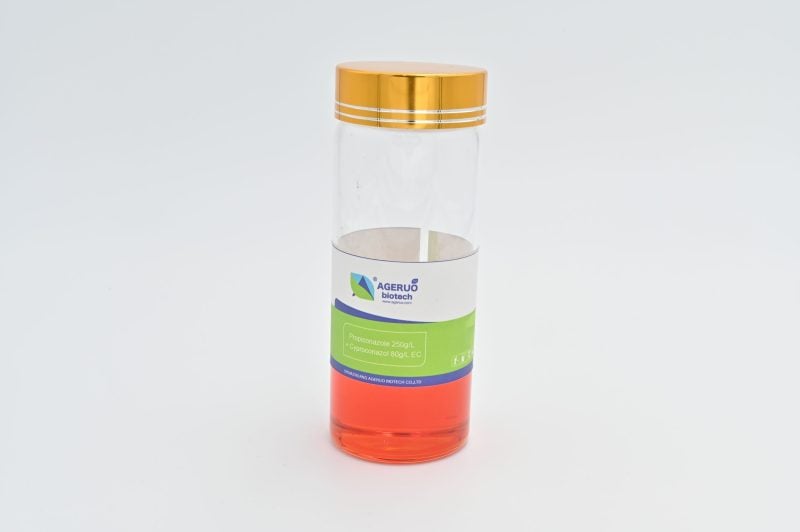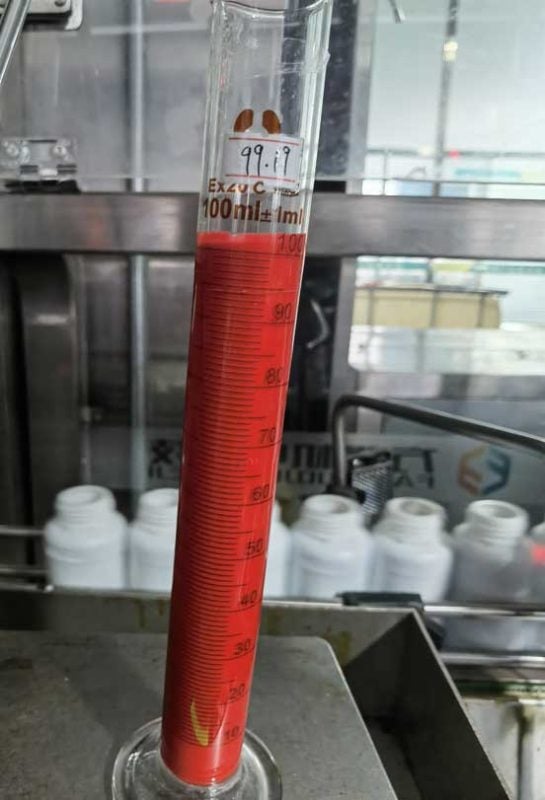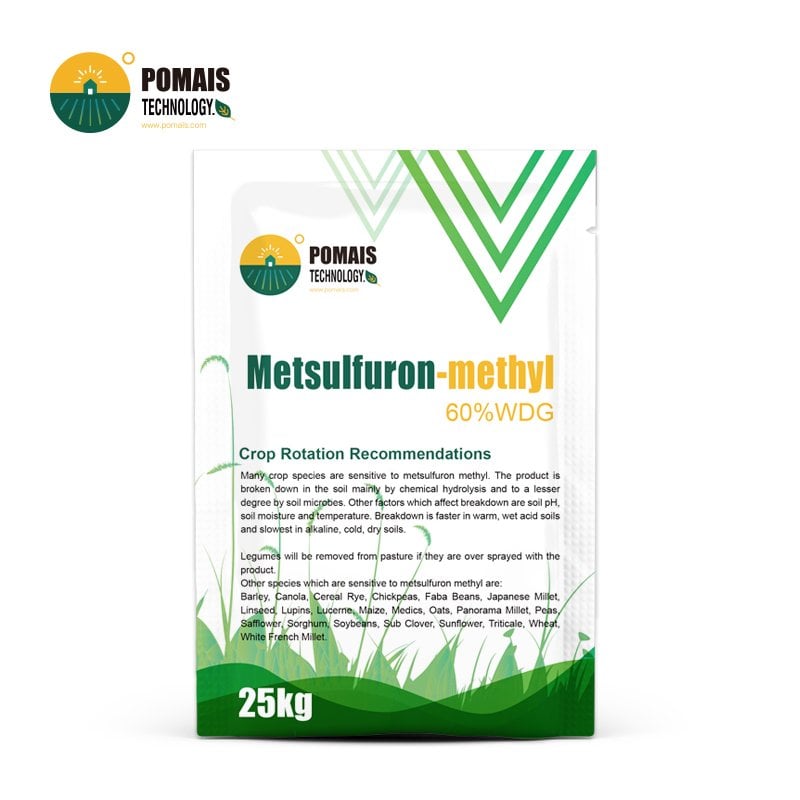Imidacloprid 5%EC, 25%WP, 30%FS, 70%WP Insecticide
Broad-Spectrum Insecticide with Long-Lasting Systemic Control
If you’re seeking a reliable and high-performance solution for managing sucking pests, Imidacloprid insecticide is your go-to active ingredient. Available in multiple formulations—5% EC, 25% WP, 30% FS, and 70% WP—this product is a systemic insecticide from the neonicotinoid family, offering contact, ingestion, and translaminar action. It disrupts insect nerve function by targeting nicotinic acetylcholine receptors, leading to paralysis and death within hours.
From grubs in lawns to aphids in crops and termites in soil, Imidacloprid delivers fast knockdown and long-lasting protection. Whether you need granular Imidacloprid for grub control, soil drench for trees, or seed treatment for cereals, this product adapts to your application needs across agriculture, turf, and structural pest control sectors.
- Designed for Professional Buyers & Bulk Orders
- This product is available for business purchase and large-scale distribution.
- We support custom packaging, labeling, and formulation to meet your market needs.
- Let’s build your brand together.

About Imidacloprid 5%EC, 25%WP, 30%FS, 70%WP Insecticide
About Imidacloprid 5%EC, 25%WP, 30%FS, 70%WP Insecticide
| Name | Imidacloprid |
| CAS Number | 138261-41-3 |
| Molecular Formula | C9H10ClN5O2 |
| Molecular Weight | 255.66 g/mol |
| Structure | Pyridine-based neonicotinoid with a nitroimine functional group |
| Chemical Family | Neonicotinoid |
| Synonyms | Admire, Confidor, Gaucho, Merit, Provado |
| Appearance | Colorless to light brown crystalline solid |
| Density | 1.54 g/cm³ |
| Melting Point | 143–144 °C |
| Boiling Point | Decomposes before boiling |
| Solubility | Soluble in water (0.51 g/L at 20 °C); soluble in organic solvents |
| Mode of Action | Binds to nicotinic acetylcholine receptors in the insect nervous system, causing paralysis |
| Target Pests | Aphids, whiteflies, leafhoppers, thrips, termites, and other sucking pests |
| Applications | Used in agriculture, horticulture, and pest control for various crops and ornamentals |
| Formulation Types | 600 g/L FS, 350 g/L SC, 200 g/L SL, 70% WG, 25% WP |
| Usage Rate | 200–400 ml/ha for foliar sprays; 250–500 ml/100 kg seeds for seed treatments |
| Environmental Impact | Highly toxic to bees and aquatic organisms; low toxicity to mammals |
| Shelf Life | 2 years when stored under proper conditions |
| Storage Conditions | Store in a cool, dry, ventilated area, away from food, drink, and animal feed |
| Safety Precautions | Use gloves, masks, and protective eyewear during handling; avoid inhalation and skin contact |
| Regulatory Status | Widely registered and approved for use in many countries; usage guidelines vary regionally |
Broad Target Spectrum for Agriculture, Turf, and Structural Pest Control
Effective Against Sucking, Boring, and Soil-Dwelling Pests
Imidacloprid insecticide delivers consistent control over a wide range of economically damaging pests. It is particularly powerful against piercing and sucking insects, including aphids, whiteflies, leafhoppers, thrips, and planthoppers—common threats to high-value crops. Its systemic properties make it equally effective against soil-dwelling pests such as grubs, rootworms, and golden needleworms, making it a trusted solution for both foliar and root-zone protection.
Beyond agriculture, Imidacloprid shows excellent results in lawn grub control, termite treatment, and ornamental plant protection. It is also widely used in vector control programs, proving effective against fleas, ants, and mealybugs in landscaped areas and around structures.
This insecticide is ideal for:
- Field crops: rice, wheat, corn, cotton, sugarcane, peanuts
- Vegetables: cabbage, cucumber, chives, leeks
- Turf & ornamentals: lawns, golf courses, nurseries, trees
- Seed treatment & soil drenching: for long-lasting control of subterranean pests
Whether you’re addressing mealybugs on magnolia, grubs in turfgrass, or whiteflies on cucumbers, Imidacloprid provides the flexibility to protect multiple crops and environments with confidence.
How Imidacloprid Works – Systemic Action with Neurotoxic Precision
Disrupting Insects from the Inside Out
As a systemic insecticide, Imidacloprid is absorbed by the plant through roots or foliage and transported via the xylem to new growth. This allows it to protect both above-ground and below-ground plant parts against feeding insects. Once ingested or contacted, the active ingredient targets nicotinic acetylcholine receptors (nAChRs) in the insect nervous system—blocking normal nerve signal transmission, leading to paralysis and death.
Unlike contact-only solutions, Imidacloprid’s systemic activity ensures uniform distribution throughout the plant, offering residual protection for up to 25 days. Its rapid mode of action makes it highly effective as a preventive treatment, especially when applied early in the pest lifecycle.
Key technical characteristics:
- Chemical class: Neonicotinoid
- Mode of action: Nicotinic receptor agonist – IRAC Group 4A
- Formula: C₉H₁₀ClN₅O₂ (molecular weight 255.66 g/mol)
- Solubility: 0.51 g/L in water at 20°C – ideal for imidacloprid soil drench or spray applications
- Stability: Effective across a wide temperature range, with enhanced efficacy in warmer climates
Thanks to its precise targeting and low mammalian toxicity, Imidacloprid remains one of the most trusted active ingredients in both agricultural and non-crop pest control worldwide.
Flexible Application Methods Tailored to Your Crop Needs
Precision in Dosing for Seed, Soil, and Foliar Applications
Imidacloprid insecticide is available in a wide range of formulations—EC, WP, FS, WDG, GR—to suit diverse application needs. Whether you’re targeting soil pests like grubs, foliar insects like aphids, or protecting your crop from the root up via seed treatment, Imidacloprid offers clear application protocols that ensure maximum efficacy and crop safety.
Seed Treatment (FS Formulation)
- Wheat, corn, peanut: Use 400–600 ml per 100 kg of seeds for protection against aphids, grubs, and golden needleworms.
- The 600 g/L FS formulation delivers high concentration with low application volume.
Foliar Spray (WP & WDG Formulations)
- Ideal for cabbage, cotton, wheat against aphids and whiteflies.
- Use 150–400 g/ha, depending on pest pressure and crop sensitivity.
- Compatible with most common foliar spray equipment.
Granular Application (GR Formulations)
- Used widely for lawn grub control, leek maggot in chives, and aphid protection in sugarcane.
- Application rate ranges from 100–200 kg/ha (2% GR) to 4000–5000 kg/ha (0.1% GR), broadcast or ditch-applied as needed.
Soil Drench & Root-Zone Use
- In greenhouse or high-value crops, imidacloprid soil drench provides long-term control by reaching hidden root-feeding insects.
- Particularly effective in tree injection or ornamental root zone delivery.
Whether you’re managing grubs in turf, whiteflies in greenhouse vegetables, or aphids in wheat, precise dosage and the right formulation ensure optimal results.
Multiple Formulations to Match Your Application Strategy
Choose from Liquid, Powder, and Granular Options for Maximum Flexibility
At POMAIS, we offer Imidacloprid insecticides in a wide range of formulations, allowing you to select the best option based on your crop type, application method, pest pressure, and local preferences. Whether you’re treating seeds, spraying foliage, or targeting soil-borne pests, we have a formulation built for performance and ease of use.
Liquid Formulations
- Imidacloprid 5% EC (Emulsifiable Concentrate): Suitable for foliar applications with fast absorption and residual effect.
- Imidacloprid 200 g/L SL (Soluble Concentrate): Clear solution ideal for spraying in open-field and horticulture crops.
- Imidacloprid 350 g/L SC (Suspension Concentrate): Enhanced stability and better coverage for high-value crops.
- Imidacloprid 600 g/L FS (Flowable Seed Treatment): Concentrated seed dressing that ensures strong root protection.
Powder & Granular Formulations
- Imidacloprid 25% WP / 70% WP (Wettable Powder): Classic dry formulations widely used in cereals and vegetables.
- Imidacloprid 70% WDG (Water Dispersible Granule): Dust-free, easy to measure and dissolve; ideal for modern sprayers.
- Granular Imidacloprid (2% GR, 0.1% GR): Targeted control for grubs, ants, and soil-dwelling pests; effective for turf, sugarcane, and root crops.
Technical Highlights
- Appearance: Colorless to light brown crystalline solid
- Density: ~1.54 g/cm³
- Melting point: 143–144°C
- Water solubility: 0.51 g/L at 20°C
- Storage life: 2 years in sealed original packaging
- Mix compatibility: Stable with most non-alkaline pesticides and fertilizers
With broad compatibility and customizable specifications, our imidacloprid products fit seamlessly into your crop protection program—whether you need high-load formulations or user-friendly granules for field labor.
Why Choose Imidacloprid – Proven Performance with Lasting Value
Broad Spectrum, Long Protection, and Market-Proven Reliability
Imidacloprid offers a rare combination of broad-spectrum control, rapid action, and extended residual activity, making it one of the most widely used and trusted insecticides in the world. Its systemic movement ensures total plant protection, while its selectivity helps preserve beneficial organisms when used properly.
1. Long-Lasting Protection
- Up to 25 days of residual efficacy, reducing the need for frequent re-application and cutting operational costs.
- Ideal for both preventive programs and rescue treatments in high-pressure seasons.
2. Broad Pest Spectrum
- Controls a wide range of piercing-sucking insects (aphids, whiteflies, leafhoppers, thrips) and soil-dwelling pests (grubs, termites, rootworms).
- Also effective in non-agricultural settings, including ornamental trees, public green spaces, and structural pest management.
3. Flexible Use in IPM
- As a systemic insecticide, it fits well into Integrated Pest Management (IPM) systems and tank-mix programs.
- Can be rotated with other insecticides to delay resistance development.
4. Low Use Rate, High Impact
- Minimal application volume needed for strong results, helping reduce handling risks and packaging waste.
- Delivers cost-efficiency without compromising performance.
5. Safe When Used Correctly
- Low mammalian toxicity and safe for crops when applied according to label guidelines.
- Used in a range of consumer and professional products, including BioAdvanced flea treatments and tree care solutions.
Whether you’re dealing with mealybugs on ornamentals, whiteflies in vegetables, or grubs in turf, Imidacloprid pesticide gives you the confidence to protect your yield—and your bottom line.
Tailored Packaging & OEM Services to Fit Your Market
From Bulk Supply to Private Label Solutions
As a global manufacturer of Imidacloprid insecticides, we understand that packaging is more than protection—it’s part of your brand. That’s why we offer a complete range of bulk and retail-ready packaging options, along with full support for OEM and private labeling to help you succeed in your market.
Bulk Packaging for Distributors & Agrochemical Brands
- Powder formulations: 25 kg woven bags or 50 kg fiber drums
- Liquid formulations: 200 L HDPE drums, 20 L cans
- Ideal for importers and regional formulators looking to repackage or redistribute
Retail & Small Pack Options
- WP & WDG: 1 kg, 500 g, 200 g, 100 g, 50 g aluminum foil bags
- SL & EC: 5 L, 1 L, 500 ml bottles or custom bottles on request
- Flexible quantities for local dealers and branded sales channels
OEM Customization Services
- Custom formulation ratios (e.g., 20%, 30%, 70% Imidacloprid or in combination)
- Label design in your language, with region-specific compliance
- Support for barcode, QR code, anti-counterfeit tags, and branded packaging
- MOQ-friendly for emerging markets and new product launches
With our vertically integrated production and labeling capabilities, you can launch your own Imidacloprid products faster, with consistent quality and branding flexibility.
Compatible with IPM and Sustainable Resistance Management
A Smart Fit for Modern Pest Control Programs
In the face of growing regulatory pressure and pest resistance concerns, Imidacloprid systemic insecticide remains a trusted option in Integrated Pest Management (IPM) programs. Its unique mode of action (IRAC Group 4A) makes it especially valuable as a rotation partner in resistance mitigation strategies for both open-field and protected cropping systems.
When used correctly, Imidacloprid provides:
- Targeted action with minimal off-target impact, reducing pressure on beneficial insect populations
- A delayed resistance profile, especially when rotated with different-mode insecticides such as pyrethroids or spinosyns
- Flexible tank-mix compatibility, enabling integration with fungicides, micronutrients, and selective herbicides without compromising efficacy
Moreover, Imidacloprid’s systemic translocation through plant tissue allows for early-season use, limiting pest establishment before population peaks. In crops like rice, cotton, and horticultural vegetables, this early intervention reduces chemical load over the season.
While concerns around pollinator safety have led to usage restrictions in some regions, Imidacloprid remains a registered and effective option when applied responsibly—avoiding bee exposure during flowering and respecting application windows.
As part of a balanced IPM plan, insecticides with Imidacloprid help maintain high productivity without sacrificing long-term sustainability or environmental responsibility.
Synergistic Formulations for Enhanced Control
Extend Your Spectrum and Residual Effectiveness with Smart Combinations
To meet diverse pest challenges and regulatory limitations, many markets now prefer premixed insecticides that offer multiple modes of action. Imidacloprid serves as a highly compatible base for such formulations, particularly when paired with other contact or systemic agents to deliver dual action and broadened pest control.
Here are some widely adopted and effective combinations:
1. Imidacloprid + Bifenthrin
- Combines systemic activity with fast knockdown contact control
- Effective against aphids, leafhoppers, ants, and termites
- Suitable for soil and foliar application, including lawn and tree treatments
2. Imidacloprid + Difenoconazole
- A true insecticide-fungicide combo, protecting crops from both pests and diseases
- Ideal for vegetable and horticultural crops with high disease pressure
3. Imidacloprid + Chlorpyrifos
- Enhances control of chewing insects, such as caterpillars, beetles, and stem borers
- A common solution in rice, sugarcane, and peanut crops
4. Imidacloprid + Cypermethrin
- Delivers quick paralysis and extended residual control
- Commonly used in cotton and field vegetable IPM programs
Whether you’re managing a complex pest spectrum or optimizing your seasonal rotation plan, choosing imidacloprid-based combination products allows you to increase efficiency, reduce application intervals, and maintain long-term control performance.
If you require custom-formulated premixes or want to develop private-label combo products with Imidacloprid 2F insecticide or granular insecticide blends, we offer full formulation and registration support to meet your local market requirements.
Proven Market Compatibility with Strong Export Track Record
Trusted by Global Distributors Across Diverse Agricultural Regions
When selecting an imidacloprid systemic insecticide for your market, field performance alone isn’t enough—you also need reliable registration history, formulation compliance, and supply continuity. At POMAIS, we have successfully exported Imidacloprid-based products to over 30 countries, with multiple formulation types tailored to regional needs and crop practices.
Middle East & Central Asia
- Afghanistan: Popular formulation – Imidacloprid 25% WP for field crop pest control
- Syria: 70% WDG widely used in wheat and vegetable systems
- Strong demand for bulk powder packaging and price-sensitive formulations
South & Southeast Asia
- Nepal: Registered for use as 20% SL and 70% WDG in rice and horticulture
- Bangladesh, Pakistan: Seed treatment demand growing for 600 g/L FS
- Local preferences include small-pack sizes for dealer distribution
Africa & Latin America
- Increasing interest in granular imidacloprid insecticide for sugarcane, peanut, and turf use
- Registration support provided for EC, WP, FS, and GR types
- High compatibility with public sector tenders and NGO-led crop protection programs
Whether you’re targeting high-volume agriculture or specialized crop sectors, our diverse imidacloprid product portfolio and multi-format packaging ensure seamless integration into your distribution model.
We also offer regulatory dossiers, local label customization, and sample support to help you achieve faster time-to-market and smoother registration processes in your country.
Responsible Use and Environmental Safety Guidelines
Protecting Effectiveness While Minimizing Non-Target Risk
Imidacloprid is widely regarded as a low-toxicity option for mammals and humans when used as directed. However, as with all systemic insecticides, careful handling and application timing are essential to avoid unintended environmental exposure—especially for pollinators, aquatic organisms, and beneficial insects.
Key Environmental Considerations:
- Highly toxic to bees if sprayed during active foraging periods or flowering stages
- Should not be applied near silkworm breeding areas, greenhouses with open airflow, or unmanaged water bodies
- Use is restricted in several countries due to pollinator concerns—application timing and technique are critical
Safe Use Recommendations:
- Avoid tank-mixing with alkaline substances, which can reduce efficacy or destabilize the formulation
- Apply under low wind conditions, preferably in early morning or late afternoon to reduce drift
- Maintain a buffer zone around water bodies and flowering crops
- Follow regional label instructions carefully regarding PPE, dosage, and pre-harvest intervals
By following these guidelines, you can ensure the effective use of imidacloprid pesticide while maintaining compliance with environmental regulations and protecting beneficial insect populations. Our team also provides support for developing region-specific labels and safety documentation to meet your country’s standards.
Beyond Agriculture – Trusted for Pets, Lawns, Trees, and Termite Control
Versatile Use Cases from Veterinary Flea Treatment to Landscape Protection
While Imidacloprid is best known for its agricultural effectiveness, its broad-spectrum systemic action also makes it a preferred ingredient in numerous non-crop pest control solutions. From backyard lawns to household pets, Imidacloprid-based products are widely used across residential and public settings.
Veterinary & Companion Animal Use
- Found in many flea control treatments for dogs and cats, including topical formulations
- Disrupts the nervous system of fleas upon contact, providing quick relief and up to 30 days of protection
- Recognized in commercial products such as imidacloprid dog flea treatment, often combined with moxidectin for heartworm prevention
Lawn & Turf Applications
- Granular imidacloprid products are commonly spread across lawns, sports fields, and golf courses for grub control
- Effective against Japanese beetle larvae, European chafers, and other root-feeding insects
- Best applied before egg hatch for season-long control, with minimal impact on turf health
Tree & Shrub Protection
- Widely used as a soil drench or trunk injection for protecting ornamental trees from scale insects, mealybugs, aphids, and emerald ash borers
- Delivers upward systemic movement, protecting new growth for months
- Commonly applied by municipal tree-care programs and landscape maintenance companies
Termite Control
- Used in termiticide formulations for soil treatment and foundation barriers
- Offers long-lasting control by killing termites as they ingest or contact treated zones
- Often combined with other actives to improve soil binding and persistence
By choosing Imidacloprid, you gain access to a proven molecule that serves not only your agricultural customers, but also veterinary, landscaping, and structural pest control segments, helping you reach multiple markets with a single product line.
Frequently Asked Questions (FAQ)
Q1: Can I use Imidacloprid on both crops and lawns?
Yes. Imidacloprid is approved for use in both agricultural crops and non-crop areas such as lawns, turf, golf courses, and ornamental trees. Granular formulations are ideal for grub control in lawns, while foliar sprays or seed treatments are preferred for crop protection.
Q2: Is Imidacloprid safe for pets?
When used in veterinary-approved products, Imidacloprid is safe and effective for dog and cat flea treatments. However, agricultural or landscaping formulations are not intended for direct application to animals. Always use pet-specific Imidacloprid products for animal care.
Q3: Can Imidacloprid be mixed with other pesticides or fertilizers?
Yes, Imidacloprid is compatible with most non-alkaline products. For foliar sprays or tank mixes, always conduct a small-scale compatibility test before full-scale use. Avoid mixing with strong alkaline substances, which may degrade the active ingredient.
Q4: Does Imidacloprid have any restrictions due to pollinator risk?
Yes. Imidacloprid is highly toxic to bees when applied during flowering or active bee periods. Follow label instructions strictly and avoid application when crops are in bloom. Choose application times carefully to minimize risk to pollinators.
Q5: Can you support OEM packaging and private label customization?
Absolutely. We provide full OEM services, including custom formulation, branded label design, language localization, anti-counterfeit coding, and export documentation to meet your local compliance standards.
Q6: What countries do you export to, and what support do you offer for registration?
We export to over 30 countries, including Afghanistan, Nepal, Syria, and across Asia, Africa, and Latin America. We offer registration dossiers, samples, technical data sheets, and label support to assist with local regulatory processes.
Q7: How should Imidacloprid be stored for optimal shelf life?
Store the product in a cool, dry, and ventilated area, away from food, drink, and feed. Keep it in sealed original containers. Under proper conditions, the shelf life is at least two years.
Why Choose POMAIS as Your Imidacloprid Partner
Reliable Manufacturing, Customized Support, and Global Experience
Choosing the right supplier for Imidacloprid insecticide means more than finding a product—it means building a long-term partnership built on quality, flexibility, and trust. At POMAIS, we go beyond manufacturing. We work with you to ensure every aspect of your sourcing experience—technical, commercial, regulatory—is seamless and reliable.
Here’s what sets us apart:
- Full-spectrum manufacturing of Imidacloprid in all major formulations: EC, WP, FS, WDG, GR, SL, SC
- Flexible OEM support: We provide small MOQ support, multi-language labeling, branded packaging, and even support for new product registration
- Advanced quality control: Every batch undergoes strict testing—from raw material to final product—using HPLC and GC analytical equipment
- Export experience in 30+ countries: We understand local market needs and formulation preferences
- On-time delivery guarantee: Backed by stable logistics partners across Asia, the Middle East, Africa, and South America
- Responsive service team: Our technical and sales staff provide prompt, professional support from inquiry to shipment
When you choose POMAIS, you’re not just buying imidacloprid products—you’re getting a dedicated manufacturing partner committed to your growth and market success.
Ready to Expand Your Market with Reliable Imidacloprid Solutions?
Let’s Build Your Brand on a Foundation of Quality and Performance
Whether you’re sourcing for agricultural distribution, turf management, veterinary pest control, or private-label expansion, our Imidacloprid insecticide portfolio delivers the performance, safety, and flexibility your business demands.
From bulk technical supply to fully packaged and branded formulations, POMAIS offers tailored solutions to match your market strategy—backed by strong logistics, multilingual labeling, and full OEM support.
If you’re ready to:
- Launch or expand your imidacloprid-based product line
- Secure a reliable manufacturer for long-term cooperation
- Adapt your formulation, packaging, and compliance to local regulations
- Or simply want to explore the best way to register and distribute imidacloprid products in your region
Get in touch with our technical sales team today.
We’ll respond quickly with solutions that align with your market, your timeline, and your growth goals.
| Name | Imidacloprid |
| CAS Number | 138261-41-3 |
| Molecular Formula | C9H10ClN5O2 |
| Molecular Weight | 255.66 g/mol |
| Structure | Pyridine-based neonicotinoid with a nitroimine functional group |
| Chemical Family | Neonicotinoid |
| Synonyms | Admire, Confidor, Gaucho, Merit, Provado |
| Appearance | Colorless to light brown crystalline solid |
| Density | 1.54 g/cm³ |
| Melting Point | 143–144 °C |
| Boiling Point | Decomposes before boiling |
| Solubility | Soluble in water (0.51 g/L at 20 °C); soluble in organic solvents |
| Mode of Action | Binds to nicotinic acetylcholine receptors in the insect nervous system, causing paralysis |
| Target Pests | Aphids, whiteflies, leafhoppers, thrips, termites, and other sucking pests |
| Applications | Used in agriculture, horticulture, and pest control for various crops and ornamentals |
| Formulation Types | 600 g/L FS, 350 g/L SC, 200 g/L SL, 70% WG, 25% WP |
| Usage Rate | 200–400 ml/ha for foliar sprays; 250–500 ml/100 kg seeds for seed treatments |
| Environmental Impact | Highly toxic to bees and aquatic organisms; low toxicity to mammals |
| Shelf Life | 2 years when stored under proper conditions |
| Storage Conditions | Store in a cool, dry, ventilated area, away from food, drink, and animal feed |
| Safety Precautions | Use gloves, masks, and protective eyewear during handling; avoid inhalation and skin contact |
| Regulatory Status | Widely registered and approved for use in many countries; usage guidelines vary regionally |
Broad Target Spectrum for Agriculture, Turf, and Structural Pest Control
Effective Against Sucking, Boring, and Soil-Dwelling Pests
Imidacloprid insecticide delivers consistent control over a wide range of economically damaging pests. It is particularly powerful against piercing and sucking insects, including aphids, whiteflies, leafhoppers, thrips, and planthoppers—common threats to high-value crops. Its systemic properties make it equally effective against soil-dwelling pests such as grubs, rootworms, and golden needleworms, making it a trusted solution for both foliar and root-zone protection.
Beyond agriculture, Imidacloprid shows excellent results in lawn grub control, termite treatment, and ornamental plant protection. It is also widely used in vector control programs, proving effective against fleas, ants, and mealybugs in landscaped areas and around structures.
This insecticide is ideal for:
- Field crops: rice, wheat, corn, cotton, sugarcane, peanuts
- Vegetables: cabbage, cucumber, chives, leeks
- Turf & ornamentals: lawns, golf courses, nurseries, trees
- Seed treatment & soil drenching: for long-lasting control of subterranean pests
Whether you’re addressing mealybugs on magnolia, grubs in turfgrass, or whiteflies on cucumbers, Imidacloprid provides the flexibility to protect multiple crops and environments with confidence.
How Imidacloprid Works – Systemic Action with Neurotoxic Precision
Disrupting Insects from the Inside Out
As a systemic insecticide, Imidacloprid is absorbed by the plant through roots or foliage and transported via the xylem to new growth. This allows it to protect both above-ground and below-ground plant parts against feeding insects. Once ingested or contacted, the active ingredient targets nicotinic acetylcholine receptors (nAChRs) in the insect nervous system—blocking normal nerve signal transmission, leading to paralysis and death.
Unlike contact-only solutions, Imidacloprid’s systemic activity ensures uniform distribution throughout the plant, offering residual protection for up to 25 days. Its rapid mode of action makes it highly effective as a preventive treatment, especially when applied early in the pest lifecycle.
Key technical characteristics:
- Chemical class: Neonicotinoid
- Mode of action: Nicotinic receptor agonist – IRAC Group 4A
- Formula: C₉H₁₀ClN₅O₂ (molecular weight 255.66 g/mol)
- Solubility: 0.51 g/L in water at 20°C – ideal for imidacloprid soil drench or spray applications
- Stability: Effective across a wide temperature range, with enhanced efficacy in warmer climates
Thanks to its precise targeting and low mammalian toxicity, Imidacloprid remains one of the most trusted active ingredients in both agricultural and non-crop pest control worldwide.
Flexible Application Methods Tailored to Your Crop Needs
Precision in Dosing for Seed, Soil, and Foliar Applications
Imidacloprid insecticide is available in a wide range of formulations—EC, WP, FS, WDG, GR—to suit diverse application needs. Whether you’re targeting soil pests like grubs, foliar insects like aphids, or protecting your crop from the root up via seed treatment, Imidacloprid offers clear application protocols that ensure maximum efficacy and crop safety.
Seed Treatment (FS Formulation)
- Wheat, corn, peanut: Use 400–600 ml per 100 kg of seeds for protection against aphids, grubs, and golden needleworms.
- The 600 g/L FS formulation delivers high concentration with low application volume.
Foliar Spray (WP & WDG Formulations)
- Ideal for cabbage, cotton, wheat against aphids and whiteflies.
- Use 150–400 g/ha, depending on pest pressure and crop sensitivity.
- Compatible with most common foliar spray equipment.
Granular Application (GR Formulations)
- Used widely for lawn grub control, leek maggot in chives, and aphid protection in sugarcane.
- Application rate ranges from 100–200 kg/ha (2% GR) to 4000–5000 kg/ha (0.1% GR), broadcast or ditch-applied as needed.
Soil Drench & Root-Zone Use
- In greenhouse or high-value crops, imidacloprid soil drench provides long-term control by reaching hidden root-feeding insects.
- Particularly effective in tree injection or ornamental root zone delivery.
Whether you’re managing grubs in turf, whiteflies in greenhouse vegetables, or aphids in wheat, precise dosage and the right formulation ensure optimal results.
Multiple Formulations to Match Your Application Strategy
Choose from Liquid, Powder, and Granular Options for Maximum Flexibility
At POMAIS, we offer Imidacloprid insecticides in a wide range of formulations, allowing you to select the best option based on your crop type, application method, pest pressure, and local preferences. Whether you’re treating seeds, spraying foliage, or targeting soil-borne pests, we have a formulation built for performance and ease of use.
Liquid Formulations
- Imidacloprid 5% EC (Emulsifiable Concentrate): Suitable for foliar applications with fast absorption and residual effect.
- Imidacloprid 200 g/L SL (Soluble Concentrate): Clear solution ideal for spraying in open-field and horticulture crops.
- Imidacloprid 350 g/L SC (Suspension Concentrate): Enhanced stability and better coverage for high-value crops.
- Imidacloprid 600 g/L FS (Flowable Seed Treatment): Concentrated seed dressing that ensures strong root protection.
Powder & Granular Formulations
- Imidacloprid 25% WP / 70% WP (Wettable Powder): Classic dry formulations widely used in cereals and vegetables.
- Imidacloprid 70% WDG (Water Dispersible Granule): Dust-free, easy to measure and dissolve; ideal for modern sprayers.
- Granular Imidacloprid (2% GR, 0.1% GR): Targeted control for grubs, ants, and soil-dwelling pests; effective for turf, sugarcane, and root crops.
Technical Highlights
- Appearance: Colorless to light brown crystalline solid
- Density: ~1.54 g/cm³
- Melting point: 143–144°C
- Water solubility: 0.51 g/L at 20°C
- Storage life: 2 years in sealed original packaging
- Mix compatibility: Stable with most non-alkaline pesticides and fertilizers
With broad compatibility and customizable specifications, our imidacloprid products fit seamlessly into your crop protection program—whether you need high-load formulations or user-friendly granules for field labor.
Why Choose Imidacloprid – Proven Performance with Lasting Value
Broad Spectrum, Long Protection, and Market-Proven Reliability
Imidacloprid offers a rare combination of broad-spectrum control, rapid action, and extended residual activity, making it one of the most widely used and trusted insecticides in the world. Its systemic movement ensures total plant protection, while its selectivity helps preserve beneficial organisms when used properly.
1. Long-Lasting Protection
- Up to 25 days of residual efficacy, reducing the need for frequent re-application and cutting operational costs.
- Ideal for both preventive programs and rescue treatments in high-pressure seasons.
2. Broad Pest Spectrum
- Controls a wide range of piercing-sucking insects (aphids, whiteflies, leafhoppers, thrips) and soil-dwelling pests (grubs, termites, rootworms).
- Also effective in non-agricultural settings, including ornamental trees, public green spaces, and structural pest management.
3. Flexible Use in IPM
- As a systemic insecticide, it fits well into Integrated Pest Management (IPM) systems and tank-mix programs.
- Can be rotated with other insecticides to delay resistance development.
4. Low Use Rate, High Impact
- Minimal application volume needed for strong results, helping reduce handling risks and packaging waste.
- Delivers cost-efficiency without compromising performance.
5. Safe When Used Correctly
- Low mammalian toxicity and safe for crops when applied according to label guidelines.
- Used in a range of consumer and professional products, including BioAdvanced flea treatments and tree care solutions.
Whether you’re dealing with mealybugs on ornamentals, whiteflies in vegetables, or grubs in turf, Imidacloprid pesticide gives you the confidence to protect your yield—and your bottom line.
Tailored Packaging & OEM Services to Fit Your Market
From Bulk Supply to Private Label Solutions
As a global manufacturer of Imidacloprid insecticides, we understand that packaging is more than protection—it’s part of your brand. That’s why we offer a complete range of bulk and retail-ready packaging options, along with full support for OEM and private labeling to help you succeed in your market.
Bulk Packaging for Distributors & Agrochemical Brands
- Powder formulations: 25 kg woven bags or 50 kg fiber drums
- Liquid formulations: 200 L HDPE drums, 20 L cans
- Ideal for importers and regional formulators looking to repackage or redistribute
Retail & Small Pack Options
- WP & WDG: 1 kg, 500 g, 200 g, 100 g, 50 g aluminum foil bags
- SL & EC: 5 L, 1 L, 500 ml bottles or custom bottles on request
- Flexible quantities for local dealers and branded sales channels
OEM Customization Services
- Custom formulation ratios (e.g., 20%, 30%, 70% Imidacloprid or in combination)
- Label design in your language, with region-specific compliance
- Support for barcode, QR code, anti-counterfeit tags, and branded packaging
- MOQ-friendly for emerging markets and new product launches
With our vertically integrated production and labeling capabilities, you can launch your own Imidacloprid products faster, with consistent quality and branding flexibility.
Compatible with IPM and Sustainable Resistance Management
A Smart Fit for Modern Pest Control Programs
In the face of growing regulatory pressure and pest resistance concerns, Imidacloprid systemic insecticide remains a trusted option in Integrated Pest Management (IPM) programs. Its unique mode of action (IRAC Group 4A) makes it especially valuable as a rotation partner in resistance mitigation strategies for both open-field and protected cropping systems.
When used correctly, Imidacloprid provides:
- Targeted action with minimal off-target impact, reducing pressure on beneficial insect populations
- A delayed resistance profile, especially when rotated with different-mode insecticides such as pyrethroids or spinosyns
- Flexible tank-mix compatibility, enabling integration with fungicides, micronutrients, and selective herbicides without compromising efficacy
Moreover, Imidacloprid’s systemic translocation through plant tissue allows for early-season use, limiting pest establishment before population peaks. In crops like rice, cotton, and horticultural vegetables, this early intervention reduces chemical load over the season.
While concerns around pollinator safety have led to usage restrictions in some regions, Imidacloprid remains a registered and effective option when applied responsibly—avoiding bee exposure during flowering and respecting application windows.
As part of a balanced IPM plan, insecticides with Imidacloprid help maintain high productivity without sacrificing long-term sustainability or environmental responsibility.
Synergistic Formulations for Enhanced Control
Extend Your Spectrum and Residual Effectiveness with Smart Combinations
To meet diverse pest challenges and regulatory limitations, many markets now prefer premixed insecticides that offer multiple modes of action. Imidacloprid serves as a highly compatible base for such formulations, particularly when paired with other contact or systemic agents to deliver dual action and broadened pest control.
Here are some widely adopted and effective combinations:
1. Imidacloprid + Bifenthrin
- Combines systemic activity with fast knockdown contact control
- Effective against aphids, leafhoppers, ants, and termites
- Suitable for soil and foliar application, including lawn and tree treatments
2. Imidacloprid + Difenoconazole
- A true insecticide-fungicide combo, protecting crops from both pests and diseases
- Ideal for vegetable and horticultural crops with high disease pressure
3. Imidacloprid + Chlorpyrifos
- Enhances control of chewing insects, such as caterpillars, beetles, and stem borers
- A common solution in rice, sugarcane, and peanut crops
4. Imidacloprid + Cypermethrin
- Delivers quick paralysis and extended residual control
- Commonly used in cotton and field vegetable IPM programs
Whether you’re managing a complex pest spectrum or optimizing your seasonal rotation plan, choosing imidacloprid-based combination products allows you to increase efficiency, reduce application intervals, and maintain long-term control performance.
If you require custom-formulated premixes or want to develop private-label combo products with Imidacloprid 2F insecticide or granular insecticide blends, we offer full formulation and registration support to meet your local market requirements.
Proven Market Compatibility with Strong Export Track Record
Trusted by Global Distributors Across Diverse Agricultural Regions
When selecting an imidacloprid systemic insecticide for your market, field performance alone isn’t enough—you also need reliable registration history, formulation compliance, and supply continuity. At POMAIS, we have successfully exported Imidacloprid-based products to over 30 countries, with multiple formulation types tailored to regional needs and crop practices.
Middle East & Central Asia
- Afghanistan: Popular formulation – Imidacloprid 25% WP for field crop pest control
- Syria: 70% WDG widely used in wheat and vegetable systems
- Strong demand for bulk powder packaging and price-sensitive formulations
South & Southeast Asia
- Nepal: Registered for use as 20% SL and 70% WDG in rice and horticulture
- Bangladesh, Pakistan: Seed treatment demand growing for 600 g/L FS
- Local preferences include small-pack sizes for dealer distribution
Africa & Latin America
- Increasing interest in granular imidacloprid insecticide for sugarcane, peanut, and turf use
- Registration support provided for EC, WP, FS, and GR types
- High compatibility with public sector tenders and NGO-led crop protection programs
Whether you’re targeting high-volume agriculture or specialized crop sectors, our diverse imidacloprid product portfolio and multi-format packaging ensure seamless integration into your distribution model.
We also offer regulatory dossiers, local label customization, and sample support to help you achieve faster time-to-market and smoother registration processes in your country.
Responsible Use and Environmental Safety Guidelines
Protecting Effectiveness While Minimizing Non-Target Risk
Imidacloprid is widely regarded as a low-toxicity option for mammals and humans when used as directed. However, as with all systemic insecticides, careful handling and application timing are essential to avoid unintended environmental exposure—especially for pollinators, aquatic organisms, and beneficial insects.
Key Environmental Considerations:
- Highly toxic to bees if sprayed during active foraging periods or flowering stages
- Should not be applied near silkworm breeding areas, greenhouses with open airflow, or unmanaged water bodies
- Use is restricted in several countries due to pollinator concerns—application timing and technique are critical
Safe Use Recommendations:
- Avoid tank-mixing with alkaline substances, which can reduce efficacy or destabilize the formulation
- Apply under low wind conditions, preferably in early morning or late afternoon to reduce drift
- Maintain a buffer zone around water bodies and flowering crops
- Follow regional label instructions carefully regarding PPE, dosage, and pre-harvest intervals
By following these guidelines, you can ensure the effective use of imidacloprid pesticide while maintaining compliance with environmental regulations and protecting beneficial insect populations. Our team also provides support for developing region-specific labels and safety documentation to meet your country’s standards.
Beyond Agriculture – Trusted for Pets, Lawns, Trees, and Termite Control
Versatile Use Cases from Veterinary Flea Treatment to Landscape Protection
While Imidacloprid is best known for its agricultural effectiveness, its broad-spectrum systemic action also makes it a preferred ingredient in numerous non-crop pest control solutions. From backyard lawns to household pets, Imidacloprid-based products are widely used across residential and public settings.
Veterinary & Companion Animal Use
- Found in many flea control treatments for dogs and cats, including topical formulations
- Disrupts the nervous system of fleas upon contact, providing quick relief and up to 30 days of protection
- Recognized in commercial products such as imidacloprid dog flea treatment, often combined with moxidectin for heartworm prevention
Lawn & Turf Applications
- Granular imidacloprid products are commonly spread across lawns, sports fields, and golf courses for grub control
- Effective against Japanese beetle larvae, European chafers, and other root-feeding insects
- Best applied before egg hatch for season-long control, with minimal impact on turf health
Tree & Shrub Protection
- Widely used as a soil drench or trunk injection for protecting ornamental trees from scale insects, mealybugs, aphids, and emerald ash borers
- Delivers upward systemic movement, protecting new growth for months
- Commonly applied by municipal tree-care programs and landscape maintenance companies
Termite Control
- Used in termiticide formulations for soil treatment and foundation barriers
- Offers long-lasting control by killing termites as they ingest or contact treated zones
- Often combined with other actives to improve soil binding and persistence
By choosing Imidacloprid, you gain access to a proven molecule that serves not only your agricultural customers, but also veterinary, landscaping, and structural pest control segments, helping you reach multiple markets with a single product line.
Frequently Asked Questions (FAQ)
Q1: Can I use Imidacloprid on both crops and lawns?
Yes. Imidacloprid is approved for use in both agricultural crops and non-crop areas such as lawns, turf, golf courses, and ornamental trees. Granular formulations are ideal for grub control in lawns, while foliar sprays or seed treatments are preferred for crop protection.
Q2: Is Imidacloprid safe for pets?
When used in veterinary-approved products, Imidacloprid is safe and effective for dog and cat flea treatments. However, agricultural or landscaping formulations are not intended for direct application to animals. Always use pet-specific Imidacloprid products for animal care.
Q3: Can Imidacloprid be mixed with other pesticides or fertilizers?
Yes, Imidacloprid is compatible with most non-alkaline products. For foliar sprays or tank mixes, always conduct a small-scale compatibility test before full-scale use. Avoid mixing with strong alkaline substances, which may degrade the active ingredient.
Q4: Does Imidacloprid have any restrictions due to pollinator risk?
Yes. Imidacloprid is highly toxic to bees when applied during flowering or active bee periods. Follow label instructions strictly and avoid application when crops are in bloom. Choose application times carefully to minimize risk to pollinators.
Q5: Can you support OEM packaging and private label customization?
Absolutely. We provide full OEM services, including custom formulation, branded label design, language localization, anti-counterfeit coding, and export documentation to meet your local compliance standards.
Q6: What countries do you export to, and what support do you offer for registration?
We export to over 30 countries, including Afghanistan, Nepal, Syria, and across Asia, Africa, and Latin America. We offer registration dossiers, samples, technical data sheets, and label support to assist with local regulatory processes.
Q7: How should Imidacloprid be stored for optimal shelf life?
Store the product in a cool, dry, and ventilated area, away from food, drink, and feed. Keep it in sealed original containers. Under proper conditions, the shelf life is at least two years.
Why Choose POMAIS as Your Imidacloprid Partner
Reliable Manufacturing, Customized Support, and Global Experience
Choosing the right supplier for Imidacloprid insecticide means more than finding a product—it means building a long-term partnership built on quality, flexibility, and trust. At POMAIS, we go beyond manufacturing. We work with you to ensure every aspect of your sourcing experience—technical, commercial, regulatory—is seamless and reliable.
Here’s what sets us apart:
- Full-spectrum manufacturing of Imidacloprid in all major formulations: EC, WP, FS, WDG, GR, SL, SC
- Flexible OEM support: We provide small MOQ support, multi-language labeling, branded packaging, and even support for new product registration
- Advanced quality control: Every batch undergoes strict testing—from raw material to final product—using HPLC and GC analytical equipment
- Export experience in 30+ countries: We understand local market needs and formulation preferences
- On-time delivery guarantee: Backed by stable logistics partners across Asia, the Middle East, Africa, and South America
- Responsive service team: Our technical and sales staff provide prompt, professional support from inquiry to shipment
When you choose POMAIS, you’re not just buying imidacloprid products—you’re getting a dedicated manufacturing partner committed to your growth and market success.
Ready to Expand Your Market with Reliable Imidacloprid Solutions?
Let’s Build Your Brand on a Foundation of Quality and Performance
Whether you’re sourcing for agricultural distribution, turf management, veterinary pest control, or private-label expansion, our Imidacloprid insecticide portfolio delivers the performance, safety, and flexibility your business demands.
From bulk technical supply to fully packaged and branded formulations, POMAIS offers tailored solutions to match your market strategy—backed by strong logistics, multilingual labeling, and full OEM support.
If you’re ready to:
- Launch or expand your imidacloprid-based product line
- Secure a reliable manufacturer for long-term cooperation
- Adapt your formulation, packaging, and compliance to local regulations
- Or simply want to explore the best way to register and distribute imidacloprid products in your region
Get in touch with our technical sales team today.
We’ll respond quickly with solutions that align with your market, your timeline, and your growth goals.
Related Products
Latest News

